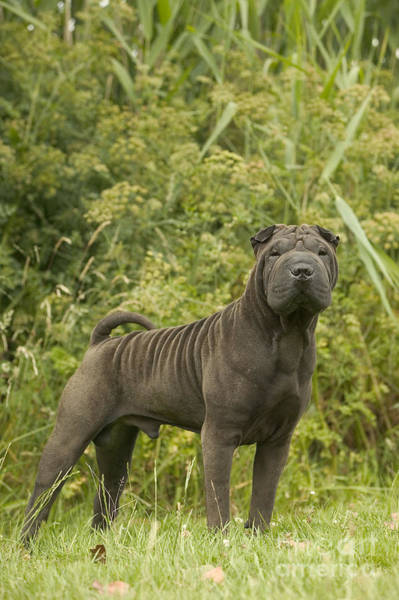
With two types of mouths, different coat textures, and a variety of colorful terms unique to the breed (calabash head, clam shell ears, black-bean triangular eyes, old lady’s face, roof tile mouth, bamboo tongue, butterfly nose, yellow cattle neck, grass carp body, shrimp waist, hard wire tail, persimmon butt, column arms, pipa thighs, and garlic clove paws!), the Chinese Shar-Pei is one of the most interesting breeds in the world. We have always, however, hesitated to use a descriptive we often come across when researching the breed, and that is “fighting dog, ” or “Chinese Fighting Dog.”
It is a sad fact that at some point in its history, dog fighters and gamblers in China began to pit Shar-Pei against each other. The breed’s famous wrinkled skin that had protected the dog when hunting wolves and wild boar also served it well in the pits: If another dog grabbed a hold of the Shar-Pei’s skin, the dog could still turn and face its attacker head on. One can’t sugar coat any breed’s use as a fighting dog, but we don’t like to dwell on it, either, and that’s why we’ve tried to avoid touching upon a cruel blood sport by calling the breed by this name.
However……..
We came across a statement that made us look for confirmation elsewhere, and we found it. Evidently, the Chinese called any dog used to protect property or people as a “fighting dog,” much the way we in the US designate such breeds as “working” dogs. For anyone who finds “fighting” a curious use of the word to describe a breed that doesn’t fight, consider this: The study guide for AKC Judges mentions that the Shar-Pei’s old standard actually stated a “warrior like stance.” Furthermore, the Chinese observed that a guard dog at work had a distinct body language: A tail held high and stiff, the head raised up and with a scowling expression, and the forward learning carriage that exudes a dominant, confident posture – it all telegraphs to other dogs one message: Don’t mess with me. This, then, may be why guard dogs in China are called “fighting dogs.”
Image: Shar Pei by Jean-Michel Labat is available for purchase as fine art, and in lifestyle and home decor items here

I owned a beautiful smooth coated black Shar-pei for !2 of his 14 years. He was a great dog! I could trust him with our young grandchildren, and he was wonderful with adults welcomed into our home. We enjoyed long walks together. His only flaw was a case of separation anxiety that never quite resolved. I miss him to this day!
We suspect that we never stop missing these wonderful dogs, Phyllis. We console ourselves with the reminder that we were lucky to have them at all.